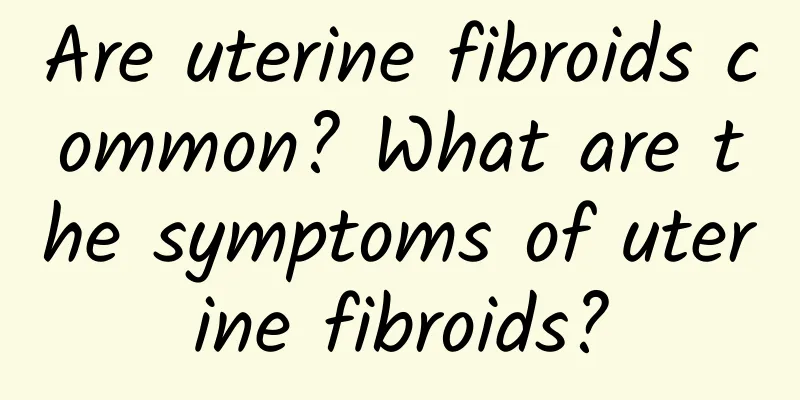What are the methods for treating uterine fibroids? Briefly talk about three common uterine fibroid surgeries

|
Uterine fibroids are a gynecological disease that requires timely treatment. Uterine fibroid surgery is a good way to treat uterine fibroids and has a good effect on uterine fibroids. What are the common uterine fibroid surgeries? The following are common uterine fibroid surgeries. Generally speaking, common surgeries for uterine fibroids include: 1. Uterine fibroid ablation: Radiofrequency ablation technology is a thermal injury technology that has developed rapidly in recent years. This type of uterine fibroid surgery is a high-frequency electromagnetic wave that can produce a 60~90℃ thermal effect. Under super guidance, the radiofrequency treatment source accurately and precisely intervenes in the lesion site through natural cavities such as the vagina and cervix, acts on the tissue, and causes the tissue temperature to rise to produce high fever, irreversible coagulation, degeneration, and necrosis, which are eventually absorbed and discharged by the body to achieve the purpose of treatment. Electromagnetic waves have no effect on patients and surgical personnel. Uterine fibroid surgery is simple, safe, mildly traumatic, short in treatment time, no hospitalization required, accurate in efficacy, low in cost, and easy for patients to accept. 2. Vaginal uterine fibroid surgery: It is also a common uterine fibroid surgery. With the continuous deepening of the concept of minimally invasive surgery, negative uterine fibroid surgery has also been included in minimally invasive surgery, on par with gynecological laparoscopic surgery. Negative uterine surgery is the most common in myomectomy and hysterectomy. 3. Endoscopic uterine fibroid surgery: 1. Laparoscopic total hysterectomy: This uterine fibroid surgery has the advantages of less trauma, fewer complications, shorter hospital stay, etc. It preserves the integrity of the abdominal wall, quickly recovers gastrointestinal function, and has little interference with the pelvic and abdominal environment. 2. Hysteroscopic myomectomy: If the uterine fibroid is located under the uterine mucosa, which is medically called submucosal uterine fibroids, this uterine fibroid surgery is suitable for removing submucosal uterine fibroids using hysteroscopic electroresection. |
Recommend
How to treat uterine fibroids better? Here are some common surgical methods for uterine fibroids.
Surgery is effective in treating uterine fibroids...
Can I eat pomegranates if I have a miscarriage?
Pomegranates contain a variety of vitamins and mi...
Is it true that threatened abortion cannot be completely cured?
Threatened abortion is increasingly causing fear ...
Is there a genetic tendency for irregular menstruation?
Is there a genetic tendency for irregular menstru...
The best period for painless abortion
The best time for painless abortion is usually 6 ...
What are the symptoms of chronic cervicitis?
Chronic cervicitis is one of the many injuries to...
What are the consequences of recurrence of cervical precancerous lesions?
Atypical hyperplasia of the cervix is a precanc...
Self-care measures for patients with Bartholinitis
How can patients with Bartholinitis be cared for ...
How harmful are uterine fibroids to women?
The reason why most women do not pay attention to...
Cost of treatment for chronic Bartholinitis
How much does Bartholinitis cost? This is a quest...
What can I eat after uterine fibroid surgery? Dietary care methods after uterine fibroid surgery
For patients who have undergone uterine fibroid s...
Elderly women should be alert to vaginitis in autumn and winter
Autumn and winter are the peak seasons for vagini...
You should eat snacks even when losing weight! 10 High-Protein Snacks
Protein is an essential nutrient for the human bo...
What are the clinical manifestations of endometriosis?
Endometriosis is a serious disease. Many people i...
How is ectopic pregnancy surgery performed?
Ectopic pregnancy surgery is mainly performed thr...









